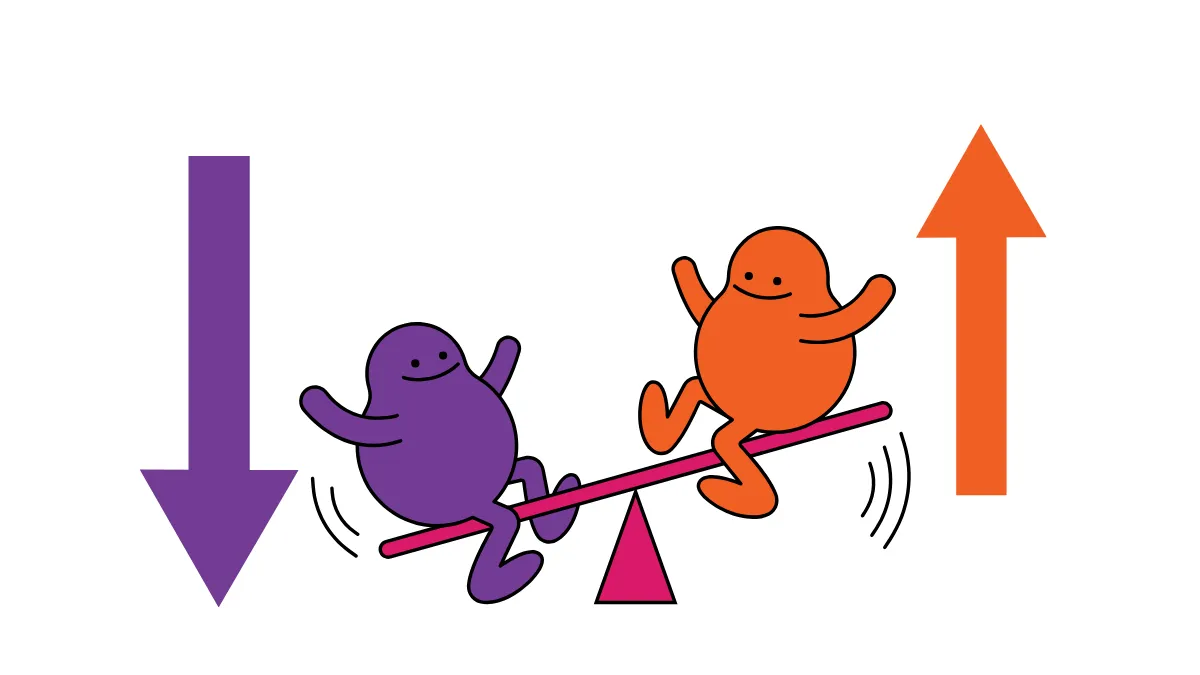Forex Trading "leverage" Explained: Amplify Opportunities, Amplify Risks
When learning about forex trading, you may often hear the term "leverage", frequently accompanied by high ratios like 100:1 or even 500:1.It sounds like you can make large trades with very little money, full of opportunities.
Indeed, but this is also one of the concepts in forex trading that requires the most caution, especially for beginners.
Leverage is like a powerful tool; used well, it can amplify your results, but if misused, it can disproportionately amplify your risks.
This article will unveil the mystery of leverage, explain what it is, how it works, and emphasize the huge hidden risks to help you start more safely.
1. What Exactly Is Leverage? "Borrowing Power" from Your Broker
Simply put, in forex trading, "leverage" means you can borrow funds from your broker to conduct trades much larger than your own capital.It allows you to "leverage" a market position far exceeding the amount of your own invested capital.
Leverage is usually expressed as a ratio, such as 50:1, 100:1, or 200:1.
What does this ratio mean?
Leverage of 100:1 means that for every 1 unit of capital you put into your account (as margin), the broker allows you to control a market position worth 100 units.
We have discussed "margin" in previous articles.
Margin can be seen as your "entry ticket" or "deposit" for using leverage.
The margin you deposit convinces the broker to lend you a larger trading amount, thus providing leverage.
2. How Leverage Works: Amplification Effect
The core function of leverage is amplification.It amplifies your trading size, which in turn amplifies the impact of your trading results on your own capital.
Let's look at a simple example:
- No leverage scenario: Suppose you have 1,000 USD in your account, you can only trade positions worth 1,000 USD. If the market price moves favorably by 11 pips, your profit is 1,000 USD x 11 pips = 10 USD.
- Using 100:1 leverage scenario: Using a portion of your account funds (for example, 100 USD) as margin, you can control a trading position worth 10,000 USD (100 USD x 100). If the market price moves favorably by 11 pips, your profit is 10,000 USD x 11 pips = 100 USD.
See the difference? Under leverage, the same market movement generates profits significantly amplified relative to your margin.
3. Why Use Leverage? The Main Incentive
The most attractive aspect of leverage is that it allows traders with limited capital to potentially earn meaningful profits from relatively small price movements in the forex market (the "pips" we discussed earlier).Without leverage, relying solely on small capital and small price changes, trading returns might be negligible.
4. The Most Critical Warning: Leverage Also Amplifies Losses!
This cannot be emphasized enough!While leverage increases profit potential, it also amplifies the risk of losses in exactly the same way.
This is the trap beginners most easily fall into.
Let's return to the example above:
- Using 100:1 leverage scenario: You use 100 USD margin to control a 10,000 USD position. If the market price moves unfavorably by 11 pips, your loss is 10,000 USD x 11 pips = 100 USD.
This 100 USD loss equals your entire 100 USD margin invested!
A mere 11 pips adverse movement can wipe out most or all of your initial margin or trigger a "margin call" requiring you to add funds.
High leverage means even tiny unfavorable market fluctuations can cause devastating damage to your account funds.
5. How Much Leverage Should Beginners Use? (Extremely Important Advice)
For beginners just starting forex trading, our advice is very clear: please use very low leverage ratios, or even no leverage at all (1:1).Why?
- Reduce risk: Low leverage means your trading position size is small relative to your total capital. This way, even if the market moves unfavorably, the impact on your account is smaller, making it less likely to quickly trigger margin calls or forced liquidation.
- Provide buffer: Low leverage gives your trades more "breathing room" to withstand normal market fluctuations without being forced out by minor volatility.
- Focus on learning: At the beginner stage, the primary goal is to learn the market, practice analysis, and master risk management, not to pursue quick riches. Low leverage allows you to focus more on the learning process rather than constantly bearing huge financial pressure.
Although there is no absolute "best" leverage number, for beginners, choosing leverage far below the maximum offered by brokers (such as 10:1 or 20:1, or even lower) is usually wiser.
Protecting your capital should always be the top priority.
6. Leverage Is a Tool, Not a Goal
Brokers offering high leverage options does not mean you must use them.Leverage itself is neutral; it is a tool.
The real danger lies in abusing this tool, especially without experience and risk control capabilities.
Experienced traders may use higher leverage in specific situations combined with strict risk management strategies, but this is based on full awareness and preparation.
Beginners should not imitate this.
Your goal should be to make good trading decisions and manage risk well, not to pursue the highest leverage.
Conclusion
Leverage is undoubtedly one of the most attractive yet risky features in forex trading.It can magnify your potential profits like a magnifying glass, but it can also mercilessly magnify your potential losses.
For all forex beginners, always maintain a respectful attitude toward leverage.
Strongly recommend starting with the lowest leverage, or even consider trading without leverage at the initial stage.
Prioritize learning, practicing, and protecting your capital over the temptation of high leverage.
Make good use of a Demo Account to fully experience and understand the huge impact different leverage levels have on trading results without risking real money.
Hi, We are the Mr.Forex Research Team
Trading requires not just the right mindset, but also useful tools and insights.Here, we focus on Global Broker Reviews, Trading System Setup (MT4 / MT5, EA, VPS), and Forex Trading Basics.
We personally teach you to master the "Operating Manual" of financial markets, building a professional trading environment from scratch.
If you want to move from theory to practice:
- Help share this article to let more traders see the truth.
- Read more articles on Broker Tests and Forex Education.





